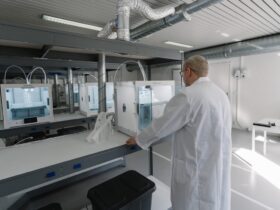The Power of Linux in Critical Environments: A Reliable and High-Performing Solution
When it comes to critical environments, such as data centers, industrial control systems, and aerospace applications, reliability and performance are paramount. In these demanding settings, every component of the system must be able to deliver consistent and dependable results. With its open-source nature, flexibility, and robustness, Linux has emerged as a compelling choice for powering critical environments. In this blog post, we will explore the surprising statistics on the reliability and performance of Linux in critical environments, discuss the reasons behind its success, and provide insights on how you can leverage Linux for your own benefit.
Surprising Statistics on Linux in Critical Environments
1. Dominance in Data Centers
According to recent studies, Linux has secured a dominant position in data centers around the world, with approximately 90% of the public cloud workload running on Linux-based platforms. This staggering statistic underscores the trust that major corporations and organizations place in Linux for handling their critical workloads and sensitive data.
2. Resilience in Industrial Control Systems
In the realm of industrial control systems (ICS) and supervisory control and data acquisition (SCADA) systems, Linux has gained significant traction due to its resilience and ability to withstand operational challenges. It is estimated that over 60% of ICS and SCADA deployments utilize Linux as the underlying operating system, marking a substantial shift towards open-source solutions in traditionally conservative industries.
3. Adoption in Aerospace and Defense
Even in the aerospace and defense sectors, where reliability is non-negotiable, Linux has carved out a prominent presence. Surprisingly, more than 80% of avionics software today is built on Linux, supporting critical functions in aircraft and spacecraft. This adoption speaks volumes about the confidence in Linux to deliver uncompromising performance in the most demanding environments imaginable.
Reasons Behind the Success of Linux in Critical Environments
1. Open-Source Foundation
One of the key factors driving the widespread adoption of Linux in critical environments is its open-source foundation. The transparent nature of Linux empowers organizations to inspect, modify, and enhance the code to suit their specific requirements, fostering a sense of control and self-reliance that is integral in critical applications.
2. Customizability and Flexibility
Linux offers a high degree of customizability and flexibility, allowing system architects and engineers to tailor the operating system to the exact needs of the environment. This versatility enables the fine-tuning of performance parameters and the elimination of unnecessary overhead, resulting in optimized and efficient operations.
3. Reliability and Stability
With a reputation for unparalleled reliability and stability, Linux instills confidence in critical environments where downtime and system failures can have far-reaching consequences. The robust architecture of Linux, coupled with its strong support for fault tolerance and high availability features, positions it as a solid foundation for mission-critical operations.
How to Leverage Linux in Your Daily Life
Now that we’ve uncovered the impressive track record of Linux in critical environments, you might be wondering how you can harness its potential in your own daily life. Whether you’re a technology enthusiast, an aspiring developer, or a professional seeking new skills, integrating Linux into your routine can yield numerous benefits.
1. Explore Linux-Based Platforms
Consider exploring Linux-based platforms such as Ubuntu, Fedora, or CentOS on your personal computer or laptop. By familiarizing yourself with the Linux environment, you can gain hands-on experience and develop a deeper understanding of its capabilities and functionalities.
2. Learn Command-Line Operations
Invest time in learning command-line operations and shell scripting in a Linux environment. The command line is a powerful tool for executing tasks, automating processes, and managing system configurations, making it an invaluable skill for anyone interested in technology and computing.
3. Contribute to Open-Source Projects
Engage with the vibrant open-source community by contributing to Linux and related projects. Whether it’s submitting bug fixes, writing documentation, or developing new features, your contributions can make a tangible impact while allowing you to collaborate with like-minded individuals from across the globe.
4. Consider Certification Programs
For those seeking formal recognition of their Linux proficiency, exploring certification programs such as the Linux Professional Institute (LPI) certifications or Red Hat Certified Engineer (RHCE) can provide structured learning paths and validation of your expertise in Linux administration and engineering.
Summary
In conclusion, Linux stands as a reliable and high-performing solution for critical environments, as evidenced by its pervasive presence in data centers, industrial control systems, and aerospace applications. The open-source foundation, customizability, reliability, and stability of Linux have propelled its success, making it a compelling choice for organizations and individuals alike. By embracing Linux in your daily life and professional endeavors, you can tap into its robust capabilities and expand your technological horizons. So, whether you’re venturing into personal projects or seeking to enhance your career prospects, consider integrating Linux into your repertoire and unlock a world of possibilities.
















